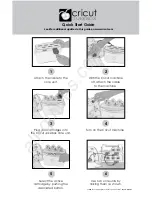
35
35
The design of the Nexus
®
Modular Hybrid Cooler helps to facilitate proper water treatment
thanks to the DiamondClear
®
Design which is a water management system that offers a self-
cleaning design, very low spray water volume, and no sunlight exposure on wetted surfaces.
Water treatment guidance for the closed loop inside the hCore
®
Heat Transfer Technology
can be found in “Closed Loop System Cleaning” on
page 34.
Corrosion and Scale Control
• To control corrosion and scale, maintain the water chemistry of the recirculating water
within the parameters listed in
Table 3
. The specific measures required vary from system
to system and are dependent on the chemistry of the make-up water, the metallurgy of the
piping and heat transfer devices exposed to the recirculating water, and the temperatures
at which the system will be operating.
• Bleed/blowdown, the continuous flow of a small portion of the recirculating water to a
drain, is used to control the concentration of dissolved solids. On rare occasions, this
may be adequate to control scale and corrosion. More often, chemical scale and corrosion
inhibitors are necessary, which raise the allowable level of dissolved solids without the risk
of scale and corrosion.
• Keep the chemically treated water within the guidelines given in
Table 3
. In cases where
bleed/blowdown alone is being employed for corrosion and scale control without chemical
treatment your water treatment specialist may recommend more conservative limits than
those shown in
Table 3.
Table 3.
Quality Guidelines for Circulating Water
Property of Water
Recommended Levels for Various Materials of Construction
Thermosetting Hybrid
Polymer
Type 304
Stainless Steel
hCore
®
Heat Transfer
Technology Stainless
Alloy
pH
6.5 to 9.2
[1]
6.5 to 9.2
[1]
6.5 to 9.5
[1]
Total Suspended Solids
25 ppm
25 ppm
25 ppm
Total Dissolved Solids
(TDS)
2,050 ppm
2,050 ppm
2,500 ppm
Conductivity
3,300
(micromhos/cm)
3,300
(micromhos/cm)
4,000 (micromhos/cm)
Alkalinity as CaCO
3
600 ppm
[2]
600 ppm
[2]
600 ppm
[2]
Calcium Hardness as
CaCO
3
50 to 750 ppm
[2]
50 to 750 ppm
[2]
750 ppm
[2]
Chlorides (CL)
300 ppm
300 ppm
750 ppm
Sulfates
350 ppm
350 ppm
750 ppm
Silica
150 ppm
150 ppm
150 ppm
NOTES:
1.
Hardness and alkalinity limits
may be exceeded under certain
circumstances. Consult your
water treatment specialist for
recommendations.
2.
The conversion factor used to
determine conductivity is 0.625
(TDS = 0.625 x Conductivity).
3.
These guidelines refer to the
materials used in construction.
Different combinations of
materials may be used on the
same unit.
4.
Water chemistry will change
with operating temperatures.
The recommended guidelines
listed in
Table 3
refers to water
temperature at 95˚F.
Corrosion Protection
Water Treatment
Corrosion and Scale Control
• A qualified water treatment professional must be consulted to develop a water
treatment plan for the times that the unit does operate wet.
• With all the combined benefits outlined above, a biological control plan may be all
that is necessary for many applications.
• Conductivity controlled blow down will manage the desired cycles of concentration.
• The basin will remain filled even when the unit is operating dry. With the high dry
capacity it is possible the unit will run for an extended period of time without engaging
the pumps, leaving the basin water stagnant. The customers water treatment plan
should include a program to handle the possibility of an idle basin.
• Applicable guidelines should be consulted regarding idle basin water treatment and/or
disinfection after prolonged dry operation without emptying the basin.
If the basin is not drained daily:
Содержание NEXUS NXF-0403N-CS2TS-H1
Страница 1: ...OPERATION MAINTENANCE MANUAL...
















































